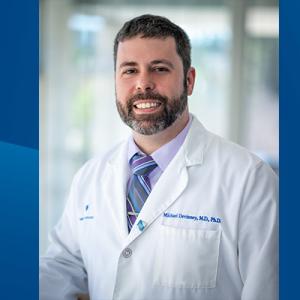Dr. Wischmeyer Awarded Grant for COVID-19 Rehabilitation Study
Congratulations to Paul Wischmeyer, MD, on receiving a $4,059,863 NIH grant for his innovative clinical trial aimed at promoting recovery of physical function, exercise tolerance and quality of life for COVID-19 ICU survivors.
Dr. Barbeito Awarded Grant for PREVENT Study
Congratulations to Atilio Barbeito, MD, MPH, on receiving a $185,364 grant for his study focused on the prehabilitation of veterans undergoing high-risk surgery using innovative deliveries of exercise and nutrition.
Dr. Mathew Awarded Multi-PI NIH Grant for “NOGGIN” Study with Dr. Piccini from Cardiology
Congratulations to the chairman of Duke Anesthesiology on receiving a $3,739,083 R01 grant for his neurocognitive study that is expected to vertically advance the field of atrial fibrillation management.
Dr. Vorenkamp Named Recipient of Presidential Scholar Award
Congratulations to Kevin Vorenkamp, MD, FASA, on receiving the Presidential Scholar Award from ASRA that recognizes his contributions to the field of regional anesthesia and pain medicine.
Dr. Achanta Awarded NIH Grant for Countermeasures Research
Congratulations to Satya Achanta, DVM, PhD, DABT, on being awarded a two-year, $442,750 R21 grant for his study aimed at discovering novel therapeutic drugs that inhibit factors contributing to pulmonary injury.
Dr. Devinney Awarded Grant for Aging and Delirium Research
Congratulations to Michael Devinney, MD, PhD, on receiving a two-year, $322,000 National Institutes of Health grant to study the association of blood-brain barrier breakdown with sleep apnea and postoperative delirium.
Grant Awarded for Immunoprofiling Study
Congratulations to Duke Anesthesiology’s Dr. Niccolò Terrando and University of Rochester’s Dr. Harris Gelbard on receiving a $239,843 multi-PI R21 NIH grant to further explore how surgery engages the immune system and develop therapies for cognitive complications.
Dr. Ji Named CTPM Director
Congratulations to Ru-Rong Ji, PhD, on being appointed as the director of Duke Anesthesiology’s Center for Translational Pain Medicine - an internationally-recognized best-in-class translational pain medicine program.
Dr. Ji Named a Highly Cited Researcher
Congratulations to Ru-Rong Ji, PhD, who is once again named among the most “Highly Cited Researchers" in the world; one of 22 faculty from the Duke University School of Medicine to make the 2020 list.
In Remembrance of Dr. William Maixner
It is with profound sadness that we inform you about the passing of a beloved member of our Duke Anesthesiology family, William “Bill” Maixner, DDS, PhD. He passed away on November 2 at the age of 68 after battling an illness. Duke flags were lowered on November 4 in honor of his life and legacy.










